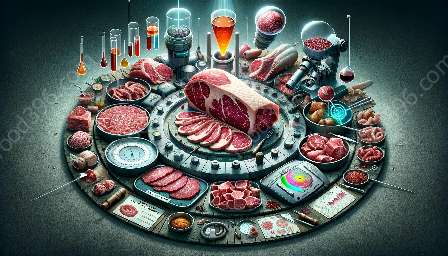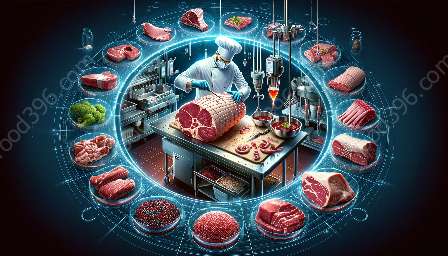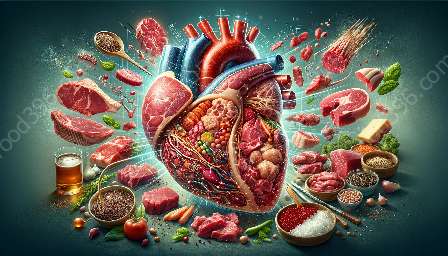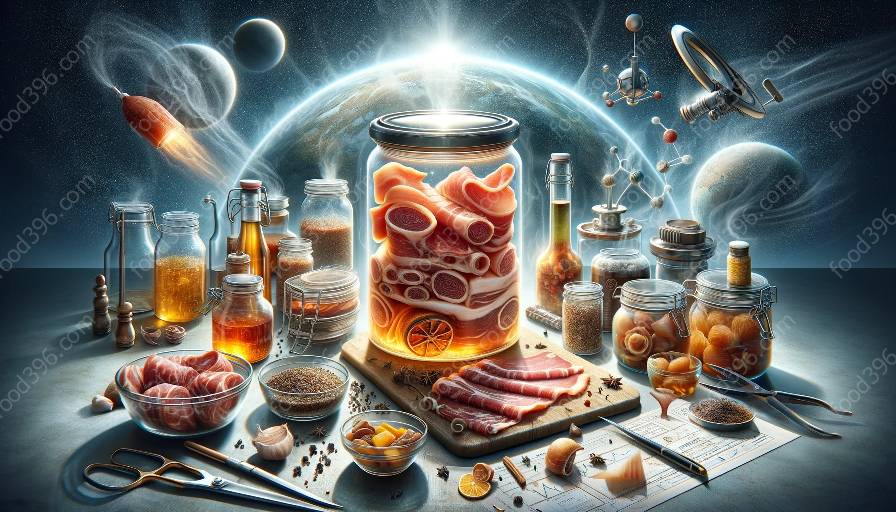Meat preservation techniques have played a crucial role throughout human history, allowing cultures to store and enjoy meat for extended periods. These techniques are not only practical but also integral to the development of traditional cuisines and food preservation methods, combining the art of food preparation with the science of meat science and food and drink experiences. In this comprehensive guide, we will delve into the various methods, their scientific principles, and their impact on the world of food and drink.
The Science of Meat Preservation
Meat preservation is the process of preventing the growth of microorganisms, as well as delaying the oxidation of fat. This is achieved through various techniques such as curing, smoking, canning, and freeze-drying. Each of these methods relies on different scientific principles to achieve the desired results.
Curing
Curing is a time-honored method of meat preservation that involves the use of salt, nitrates, and sugar to inhibit the growth of bacteria. Salt draws moisture out of the meat, making it an inhospitable environment for bacteria, while nitrates prevent bacterial growth and contribute to the characteristic flavor and color of cured meats. The science behind the curative properties of salt and nitrates lies in their ability to disrupt the osmotic balance of bacterial cells, ultimately leading to their demise.
Smoking
Smoking is another popular method of meat preservation, whereby meat is exposed to the smoke of burning wood, imparting flavor and acting as a natural preservative. The smoke contains phenols and other compounds that possess antimicrobial properties, inhibiting the growth of spoilage microorganisms. Furthermore, the heat from the smoking process helps to dry the meat, making it less susceptible to spoilage.
Canning
Canning is a preservation method that involves sealing meat in an airtight container and subjecting it to high heat, effectively killing any bacteria or microorganisms present. The hermetic seal prevents the re-entry of contaminants, ensuring the long-term preservation of the meat. The science behind canning lies in the principles of heat sterilization and vacuum sealing, which work synergistically to create an environment hostile to spoilage microorganisms.
Freeze-Drying
Freeze-drying is a modern method of meat preservation that involves freezing the meat and then subjecting it to a vacuum environment, causing the frozen water within the meat to sublimate directly from ice to vapor. This process removes moisture from the meat, inhibiting the growth of bacteria and increasing its shelf life. The science behind freeze-drying lies in the principles of sublimation and desiccation, effectively preserving the meat in a dehydrated state without the need for high temperatures.
The Impact on Food and Drink
Traditionally preserved meats are not only a testament to human ingenuity but also integral to the culinary heritage of various cultures. The unique flavors and textures imparted by these preservation techniques have shaped the cuisines of the world, from cured hams and sausages to smoked meats and canned delicacies.
Furthermore, the science behind these preservation methods has paved the way for modern food and drink innovations. Understanding the principles of curing, smoking, canning, and freeze-drying has not only preserved traditional recipes but also inspired new techniques and flavor combinations, leading to the diverse range of meats and meat products available today.
The world of meat preservation techniques is a fascinating blend of tradition, science, and culinary artistry. By exploring the historical significance, scientific principles, and culinary impact of these methods, we gain a deeper appreciation for the role they play in shaping our food and drink experiences.



















